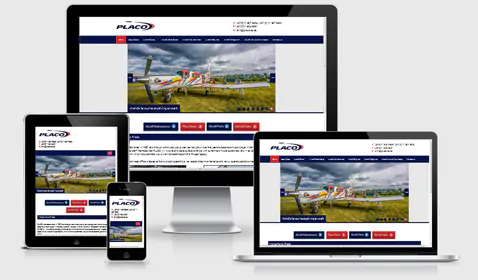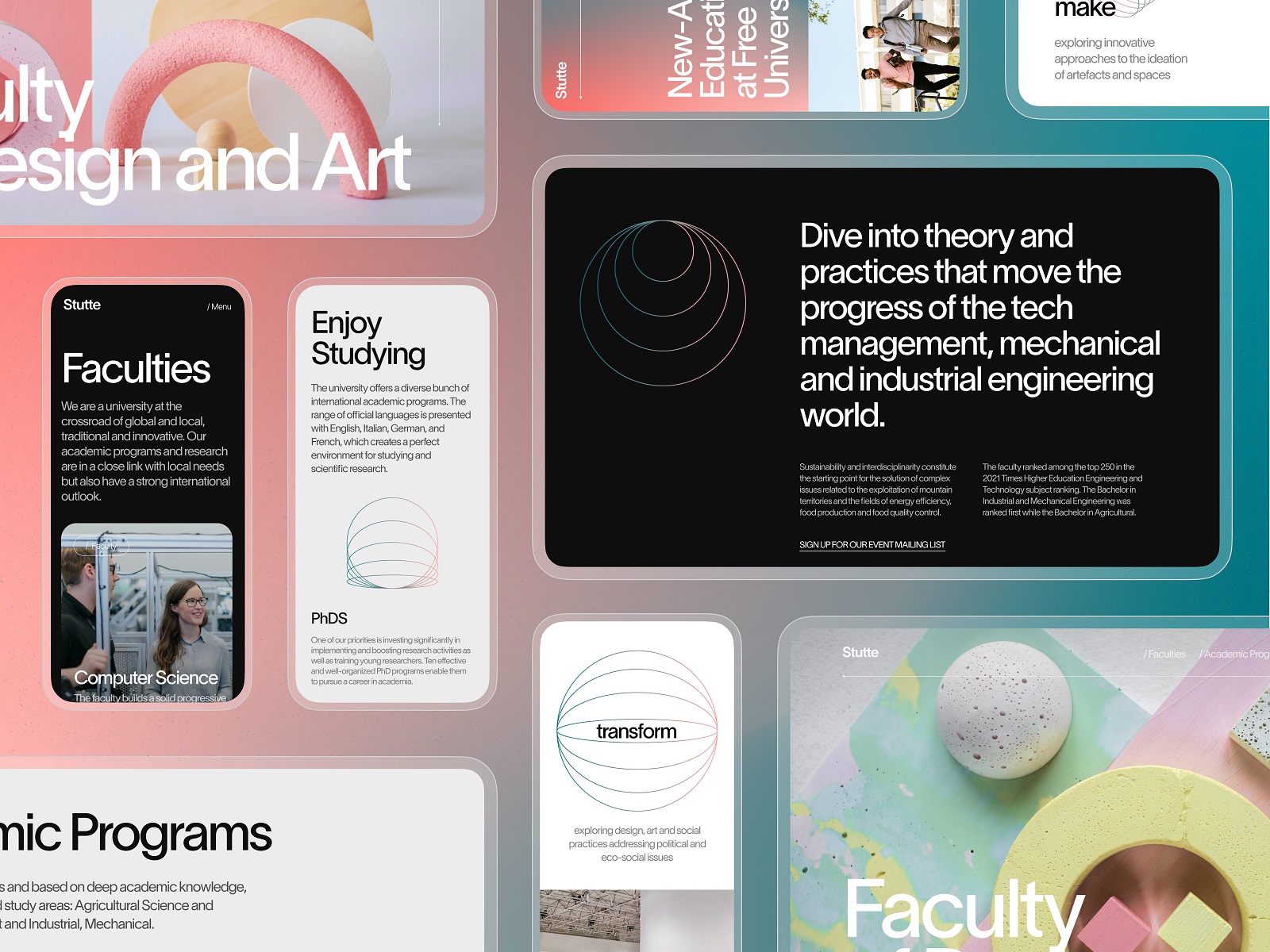How to Improve Your Website Design for Better Conversion Rates
How to Improve Your Website Design for Better Conversion Rates
Blog Article
Modern Internet Site Style That Records Focus and Converts
In a progressively digital landscape, modern-day internet site style has actually become a pivotal factor in capturing customer attention and driving conversions. By purposefully utilizing aesthetic pecking order, responsive layouts, and involving interactive aspects, developers can create experiences that not only bring in visitors however also facilitate meaningful interactions. Furthermore, reliable call-to-action strategies play a crucial role in directing individuals toward wanted results. As we discover these vital elements, it ends up being clear that understanding their interplay can dramatically affect an internet site's performance and user contentment. What are the key aspects that absolutely make a distinction?
Value of Visual Hierarchy
Aesthetic pecking order is an essential component in website layout, as it overviews individuals' attention and enhances their general experience. By strategically organizing material, developers can guide users to the most important details first, thus boosting involvement and improving functionality.
Including a sensible flow in web content plan is important; as an example, putting the most crucial information on top of a page promotes prompt recognition. Regular use of typography, such as varying font dimensions and styles, assists develop a clear content framework. This organization not just help in navigating however additionally builds trust fund, as customers really feel more comfortable when they can easily find what they are trying to find.
Inevitably, a well-executed aesthetic power structure not just enhances visual charm yet also significantly influences customer actions. By focusing on vital components and guaranteeing a seamless experience, designers can efficiently convert visitors into clients, enhancing the significance of this foundational design principle in modern internet site growth.
Responsive Layout for All Instruments
Producing a smooth experience throughout different tools is important in today's electronic landscape, where individuals gain access to web sites from desktops, tablet computers, and smartphones alike. Receptive design is an essential technique that ensures sites adjust fluidly to various screen resolutions, alignments, and dimensions. By utilizing flexible grids, photos, and CSS media queries, developers can develop designs that keep aesthetic honesty and capability, regardless of the tool being made use of.
The importance of receptive style extends past appearances; it straight impacts user interaction and conversion prices. An internet site that operates well on all gadgets encourages longer gos to and reduces bounce rates, as customers are most likely to engage with content that is very easy to navigate. Additionally, internet search engine, especially Google, focus on mobile-friendly sites in their positions, making receptive style a vital component of seo (SEO)
Including responsive design not just boosts customer experience yet additionally enhances the growth procedure. By producing a single site that functions across devices, organizations can conserve time and resources contrasted to establishing separate mobile and desktop computer versions. Ultimately, receptive style is a basic strategy for contemporary website design, guaranteeing ease of access and satisfaction for all customers, despite their gadget.
Engaging Interactive Elements
While a receptive style prepares for a useful web site, including engaging interactive components is critical for capturing customer attention and cultivating deeper links. Website Design. Interactive components, such as animations, tests, and clickable infographics, Discover More create an extra dynamic customer experience, encouraging site visitors to invest even more time on the website
Including interactive features can likewise direct individuals through facility information, making it simpler to absorb web content. Interactive sliders can highlight product variants, while ingrained video clips can provide presentations or reviews that reverberate even more than fixed images or text. Gamification methods, like rewards for involving or finishing jobs with content, can boost user inspiration and retention.
Efficient use of interactive aspects not only enriches the user experience however can likewise bring about higher conversion prices. By making interactions enjoyable and informative, organizations can grow a feeling of loyalty and depend on with their target market. Nevertheless, it is important to balance interactivity with efficiency; overly intricate functions may hinder site rate, adversely affecting customer contentment. Eventually, integrating well-designed interactive elements can considerably elevate a web site's effectiveness, driving engagement and conversions in today's affordable electronic landscape.
Structured Navigation Practices
Efficient navigating is a foundation of any successful website, as it straight influences customer experience and material accessibility. Streamlined navigating methods ensure that users can easily locate details, enhancing their communication with the website. A well-structured navigating menu should be intuitive and straightforward, usually featuring a restricted number of primary categories to prevent frustrating visitors.
To attain streamlined navigating, designers ought to prioritize an ordered structure that logically organizes material. Applying breadcrumb tracks can supply users with context regarding their current place within the site, permitting seamless backtracking. In addition, making use of drop-down menus can properly save area while still giving access to subcategories.
Responsive layout is crucial, as navigation company website needs to be functional across all gadgets (Website Design). Mobile individuals, specifically, gain from touch-friendly menus and collapsible sections that maintain functionality without compromising aesthetic appeals

Effective Call-to-Action Techniques
A well-crafted call-to-action (CTA) is necessary for assisting customers toward preferred end results on a web site, as it motivates them to engage with web content or make a purchase. To maximize their performance, CTAs must click be clear, engaging, and tactically put throughout the website.
First, utilize action-oriented language that connects necessity or value, such as "Get Started," "Sign up with Currently," or "Case Your Price cut." This language not just encourages users yet additionally establishes clear assumptions concerning the next steps.
Second, take into consideration design elements; CTAs should stick out aesthetically through contrasting colors, sufficient whitespace, and famous positioning. A button that is very easy to see and click boosts the chance of customer interaction.
In addition, personalizing CTAs based upon individual actions or demographics can dramatically enhance interaction. Customized messages resonate a lot more with users, driving higher conversion rates.

Verdict
To conclude, contemporary website layout emphasizes the integration of visual power structure, responsive formats, involving interactive elements, streamlined navigation, and reliable call-to-action strategies. These parts collectively boost individual experience, guaranteeing that visitors remain involved and motivated to discover content additionally. By prioritizing these design concepts, companies can substantially boost user retention and conversion rates, inevitably resulting in better success in the electronic landscape. The continuous advancement of website design highlights its vital role in reliable on-line communication and advertising.
In a progressively digital landscape, modern website design has actually emerged as a pivotal variable in catching individual attention and driving conversions.Aesthetic pecking order is a vital aspect in web site design, as it guides users' focus and improves their general experience.The relevance of responsive layout prolongs beyond aesthetics; it directly impacts customer engagement and conversion prices.Incorporating receptive design not just enhances customer experience but additionally enhances the development process. Eventually, receptive layout is an essential technique for modern-day site layout, guaranteeing accessibility and satisfaction for all individuals, no matter of their gadget.
Report this page